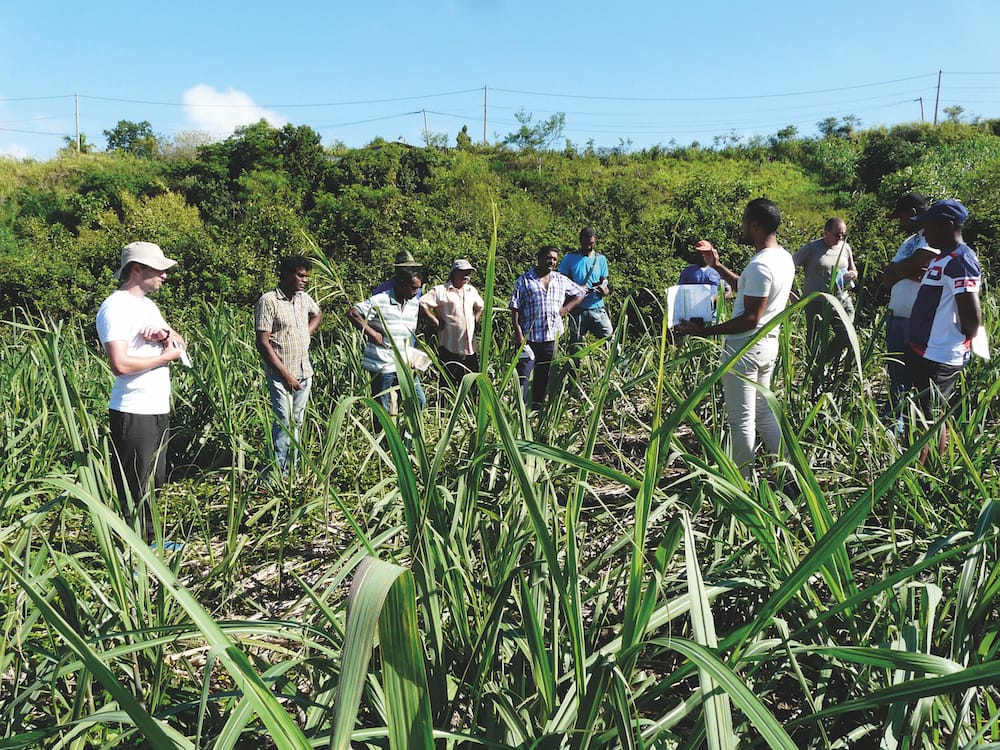Cropping Techniques department
The Cropping Techniques Department, founded in 2007, has gradually broadened its scope of activities by developing various research and development themes to offer sugarcane growers environment-friendly, sustainable and cost-effective cropping practices.
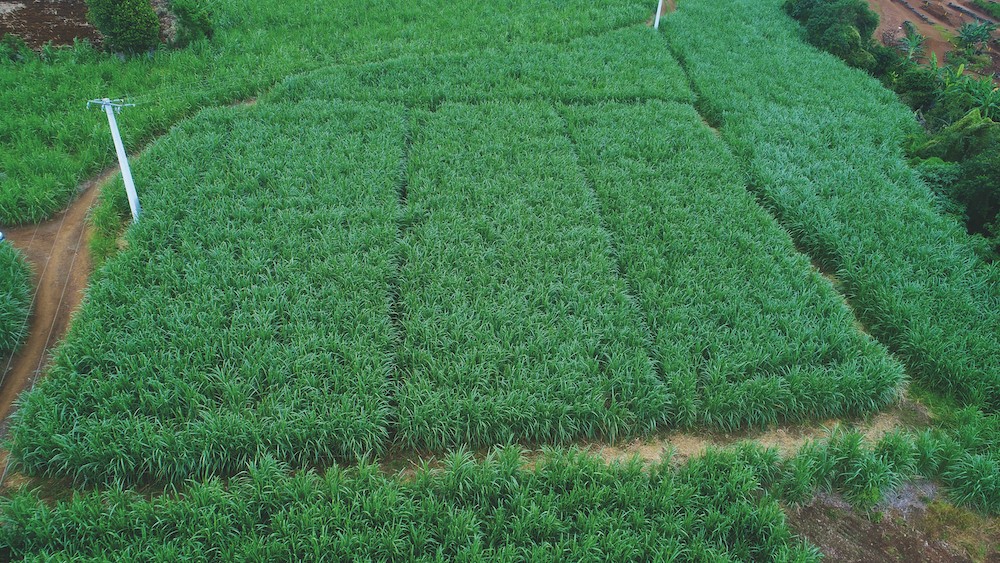
- chemical weed control, supported by the TraproH project (Traitement raisonné en produits herbicides) and by alternative chemical methods with the CanécoH (Canne économe en herbicide) and AgriécoH (Agroéquipement et innovation économe en Herbicide) projects.
- mineral fertilization with two complementary trial programmes. The first, aimed at optimizing the use of mineral fertilizers and various amendments, is being carried out with the CTICS (Centre Technique Interprofessionnel de la Canne et du Sucre) Agricultural Research team. The second, as part of the TERO project, is specific to eRcane. It focuses on knowledge of the fertilizer value of organic residues (Mafor), with the aim of substituting them for imported mineral fertilizers.
- tillage and mechanization with the Simplified Cultivation & Mechanization project. This project supports initiatives related to weed control and sugarcane fertilization while developing its own approach based on planting preceded by minimum tillage.
- dissemination of techniques and advice based on the creation and circulation of a range of communications media, but also on support for extension technicians through the set up of demonstration plots managed on growers’ farms with their participation, as part of the RITA Canne network.
Weed Control
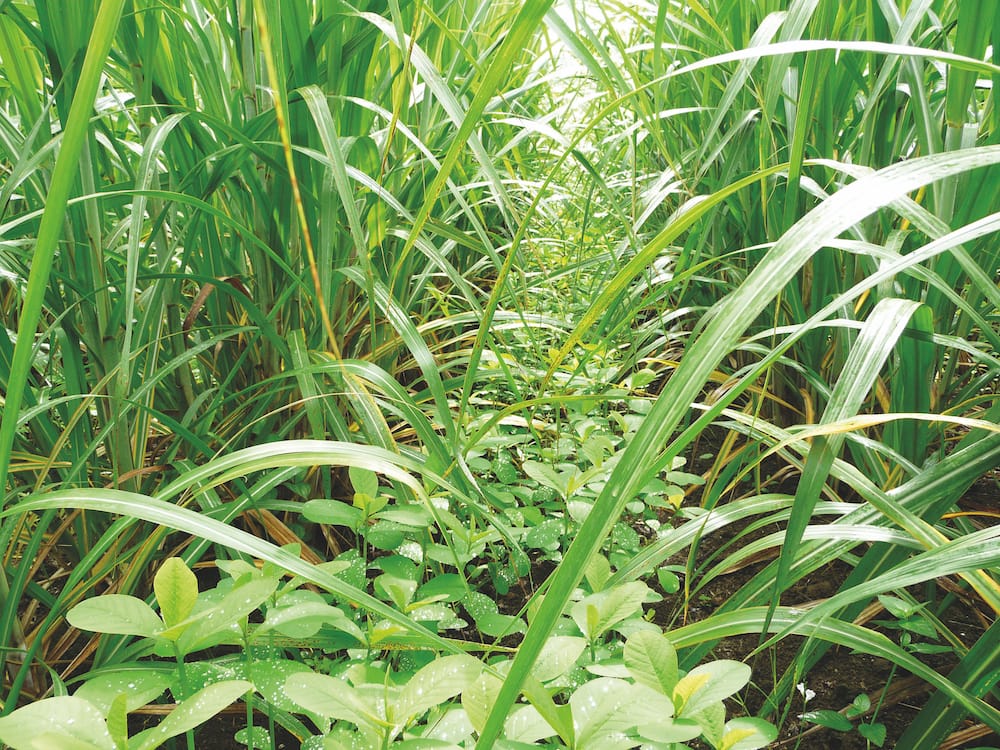
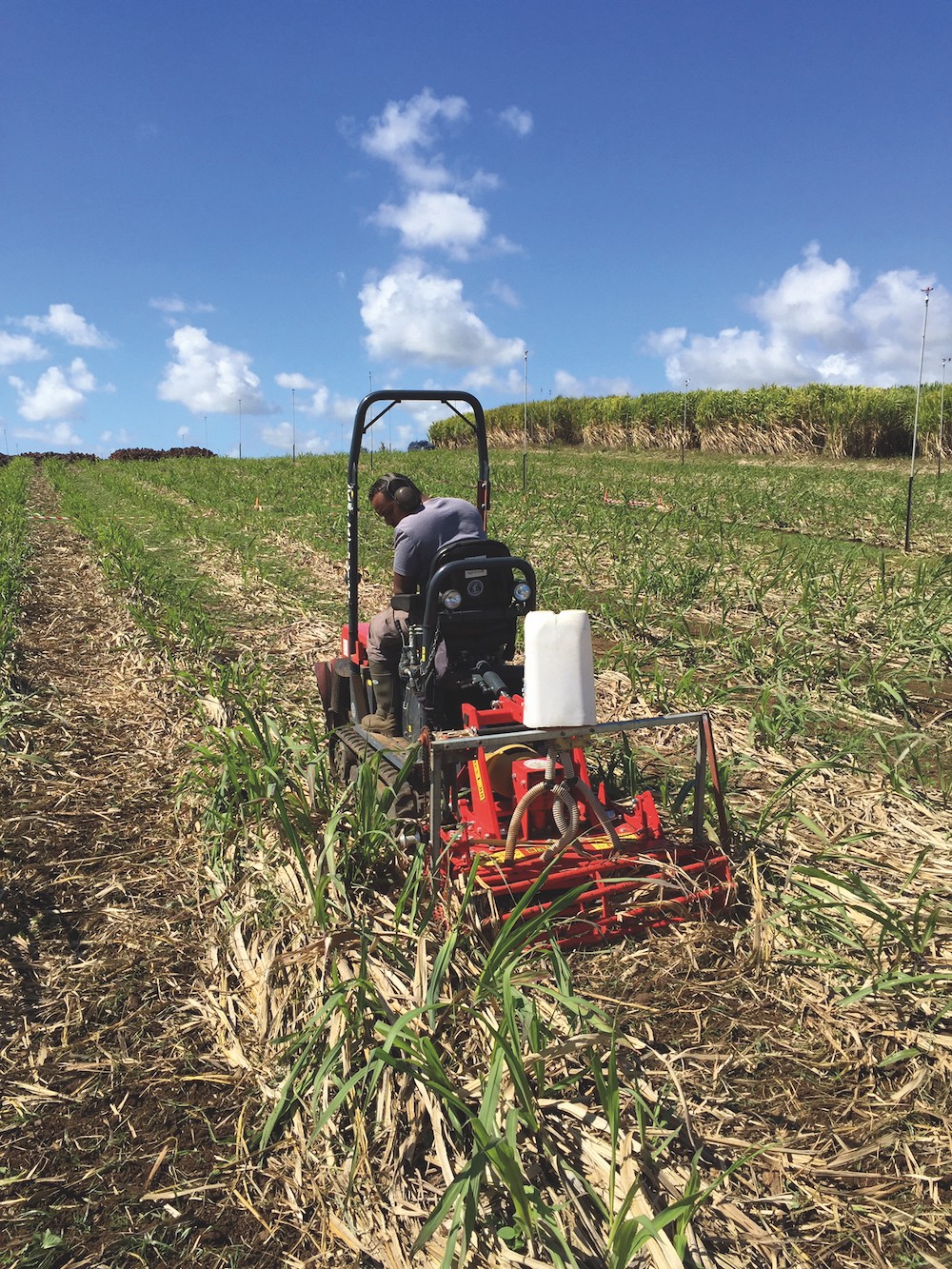
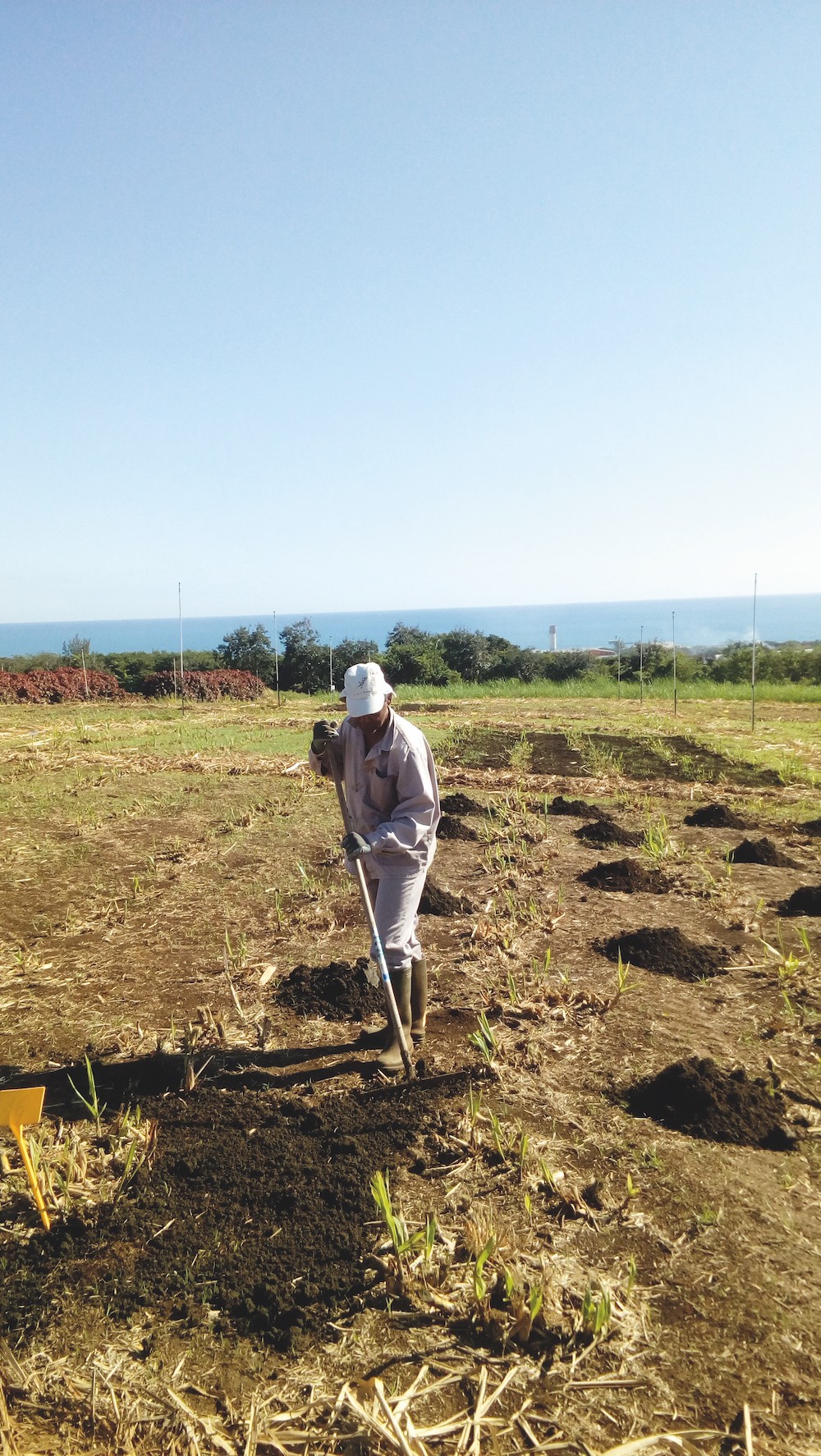
Fertilization
This research concerns both mineral fertilizers—which still meet most sugarcane nutritional needs to date—and organic residues, which are major local nutrient sources that may ultimately replace inorganic fertilizers.
Simplified tillage & mechanization
In line with the CanécoH and AgriécoH projects, the team assesses the impact of diverse layers of sugarcane trash blanket left on the ground at harvest for weed control, as well as various alternative weed control tools.
Finally, it supports the TERO project on Mafor spreading.
Several tools have been tested or developed by the project since its inception:
a Glyph-O-Mulch machine, which destroys sugarcane stubble while not impacting the interrow soil;
a rotavator, for destroying sugarcane stubble and filling the furrows after cane cuttings have been laid;
a tedder, tested to churn up sugarcane straw lying in the interrows, thus uprooting young weed shoots (in collaboration with the CanécoH project);
a joint fertilizer and Betel® spreader that also fills the furrows after planting in a single operation.
Mechanization is essential in the development of new techniques. This project can contribute to training initiatives on equipment adjustment within the framework of the RITA Canne network.
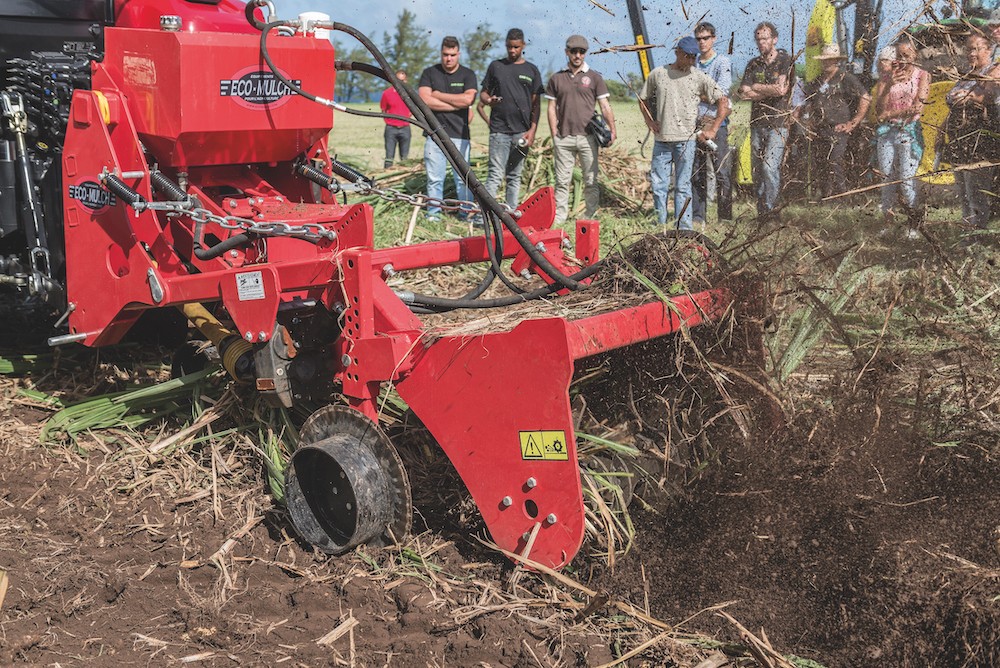
Dissemination of techniques and advice
Among these tools, the RITA Canne network, coordinated by eRcane, is setting up demonstration plots for the transfer of proven and effective practices. These demonstration plots—located in the vicinity of sugarcane farms—serve as meeting points for partners in the sugar sector: research and technical institutes, extension agencies, financial partners, etc.
